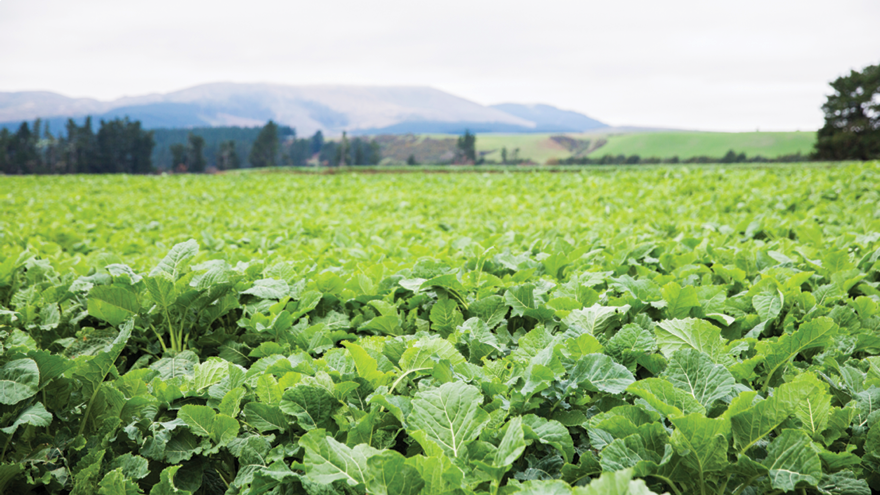
Efficient use of nitrogen side dressings on forage crops
Nitrogen (N) is required in large quantities by brassica crops. It is an essential component of plant proteins which include compounds responsible for plant structure and nutrient storage.
A healthy growing brassica crop typically contains or demands a minimum of 2 to 2.5 percent of their weight as N. This means that 1,000 kg of dry matter (DM) (crop material) contains 20 to 25 kg of N. The amount of N needed for a crop is dependent on crop yield. The higher the crop yield, the higher the N requirement for that crop. To estimate the amount of N required for a crop, you need to estimate the expected yield and multiply that figure by the concentration of N in the crop.
Plants can obtain some N from the soil and the balance needs to be supplied from fertiliser, otherwise called a side dressing. How much N is supplied by soil depends on factors such as soil temperature, soil moisture, the carbon to N soil ratio and pH. Paddock history needs to be considered too, that is, how long the paddock has been in long-term pasture. Soil tests, such as potentially available nitrogen (PAN) taken to 15 cm, can help estimate the amount of N that will be supplied by the soil. Once calculated, side dressing N fertiliser recommendations can be made to meet the crop total uptake. As a rule, if a tested paddock has had a continuous cropping history, the PAN test will be lower than what you would typically find in a paddock with a history of long-term pasture.
Applying N fertiliser at the right time and in the right amount means the N is used most efficiently and profitably. Once the crop is established, just before canopy closure, is usually the most appropriate time to apply a N side dressing. The amount of N to apply at the side dressing stage will depend upon crop demand, the estimated N supplied by the soil and the amount of N which has already been applied up to that point. If weather conditions become dry, the potential yield of the crop is influenced by the lack of soil moisture and thus the amount of N to be applied as a side dressing needs to be adjusted. If dry conditions are a common occurrence, planning to apply your N early encourages the crop to establish before weather conditions create stress on the plant.
Typically, N side dressings are in the form of urea. If rainfall is not guaranteed to fall within eight hours of applying an N side dressing, use a urease inhibited urea product such as SustaiN as it reduces potential N loss to the atmosphere.
Determining a crop’s side dressing requirement means the N being applied is being used the most efficient way possible.
If you would like to talk more about nitrogen side dressings, and get help to estimate your requirements, contact your local PGG Wrightson Technical Field Representative.



